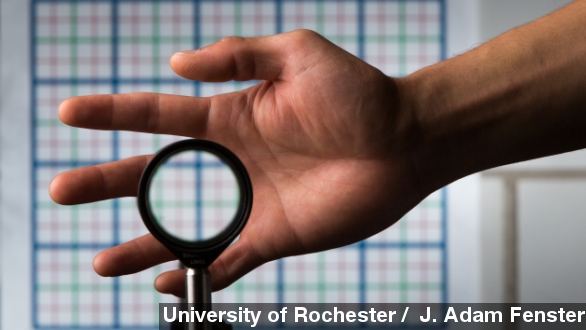You've probably heard of modern day research to create an invisibility cloak like the ones found in sci-fi movies. Now, you can add another method to the list. With some relatively simple science, researchers at the University of Rochester came up with a new way to make things disappear.
"Cloaking is essentially just an optical illusion... The basic idea... is to take light and have it pass around something... a very simple way of doing that is to use standard lenses."
KTLA: "Researchers say this is the first cloaking device that provides 3 dimensional continuous multidirectional cloaking."
That means no matter the direction from which someone is looking at the lens, whatever is behind it will not be visible. So, how does it work?
The researchers actually made this graph to explain step by step. But in short — there are four lenses of two different focal lengths. Using a mathematical equation researchers figured out how far to place them apart to bend the light and create the illusion of invisibility.
Now, this definitely isn't the first we've heard of such inviability cloaks. (Video via The Telegraph / Baile Zhang)
There are a number of methods researchers have tested to try and make the science fiction trick a reality. (Video via NTDTV)
And just like many other attempts, NBC points out, with the Rochester approach, "there are some drawbacks: For example, the simplest setup involves bending light rays through the center of the lenses, which means the zone of invisibility is actually a doughnut with a hole in the middle. If an object blocks the central axis, the invisibility effect is spoiled."
A more complex design would eliminate that pitfall. It cost the researchers about $1,000 in materials to create the device, but they believe it can be done cheaper.
According to the researchers at the University, one use for their device could be to help a surgeon "look through his hands to what he is actually operating on." The patent is pending.
This video includes images from Department of Foreign Affairs and Trade / CC By 2.0.


